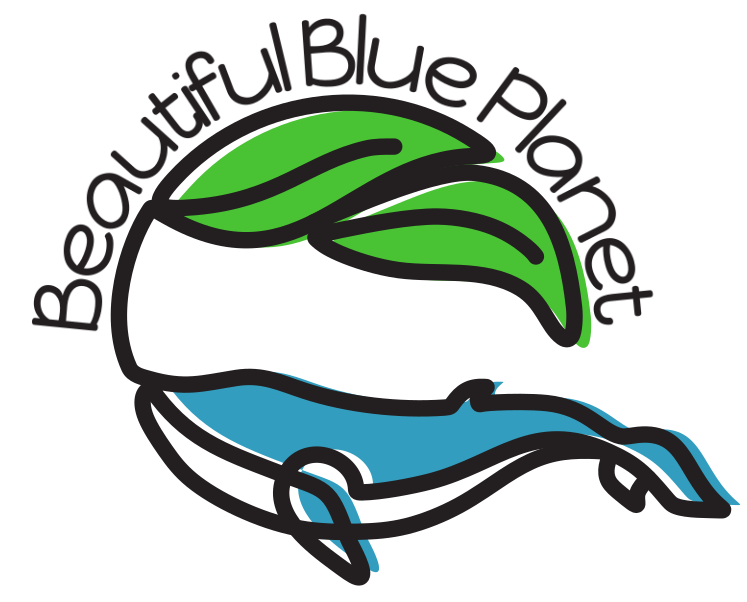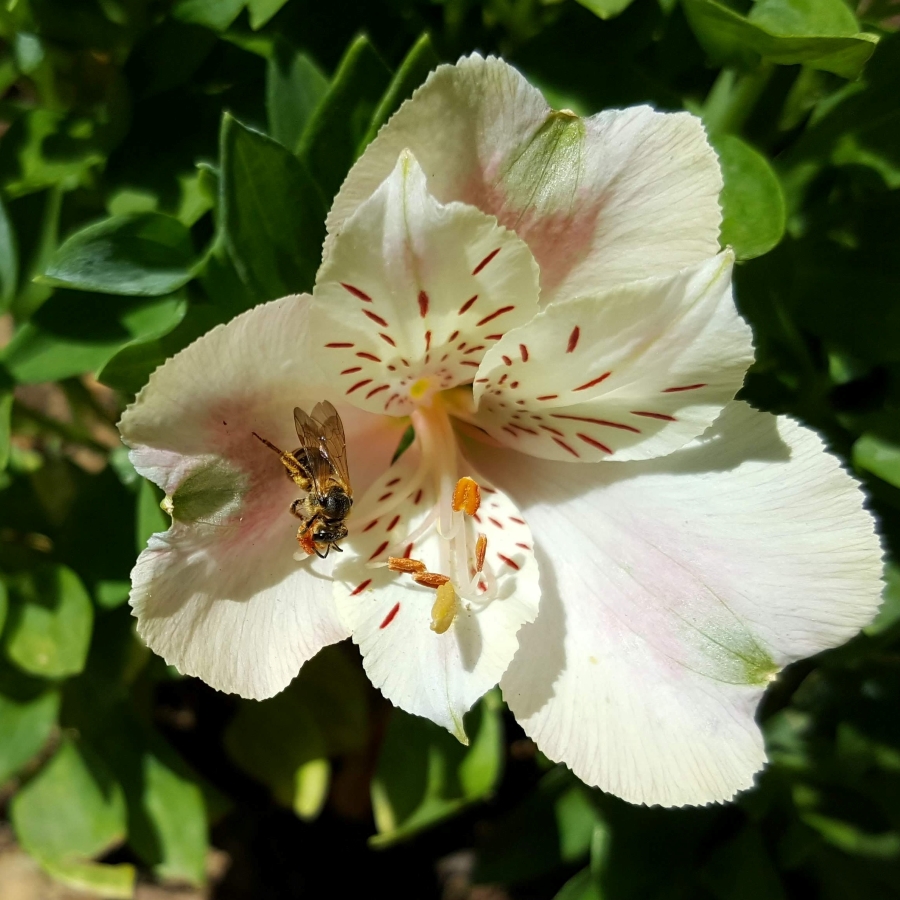“Which flowers can I plant for the bees?”
I hear it a lot. You really want to help the bees. All the pollinators are in decline. But you can help in a significant way with a pollinator garden. You need the right kind of flowers and enough of them, to give them the pollen and nectar they need to live and raise their young.

What’s good for bees is good for all the other pollinators, too: butterflies and moths, beetles, hummingbirds, flies, and wasps. But I’ll focus here on flowers for the bees because they’re the most important pollinators.
And I’m talking about the native bees—not honeybees. Honeybees were imported from Europe 400 years ago. There are about 4,000 species of native bees in the US, and they are very effective and vital pollinators. So, when you see bees, try to find the non-honeybees to see what they’re like and get to know them. These are not stinging bees—unless your hand is in their nest or squishing them.
The most important plants they need
The first requirement is to give them a spectrum of native plants.
Native flowers are essential for up to 25% of the bees that are specialist feeders. These specialists evolved at the same time as one, or a few, plant species and they depend on those flowers for their pollen and nectar. In turn, those flowers often rely on only those bees for adequate pollination. The specialists emerge from their nests as their flower begins to bloom.
The other bees are generalists and can visit many different flowers.
Bees need diversity in their diet, just like we do. Nectars vary in their ingredients, some even contain caffeine, which has been shown to improve bee learning and navigation skill! (Source) It’s been shown that native plants offer the most benefit to pollinators in their nectar and pollen. (Source) Since we know little about most native bees, the best we can do is to choose a variety of native plants to help.
Many of us live near native trees and shrubs. Most of these are hosts for butterflies and offer shelter and resting spots for pollinators. Hopefully you have natives around you already. If not, consider planting some native trees and shrubs to support your pollinator garden. You’ll be helping the birds, too, because all our wildlife depends on the plants that evolved where we are.
Provide enough bloom throughout the season
To have enough food on hand to truly support the bees, plant flowers for continuous bloom throughout the season. Once bees have found your garden they will come back often and even nest nearby. So, satisfy their efforts and keep a steady supply of flowers blooming for them. From very early spring through fall plan to have at least three types of plants blooming at any time.
Try to have abundance for them. The recommendation from the UC Berkeley Urban Bee Lab is for each species of bee plant you have to take up a minimum of three square feet. This can mean one shrub, or a three-by-three foot patch of a native flowering perennial.
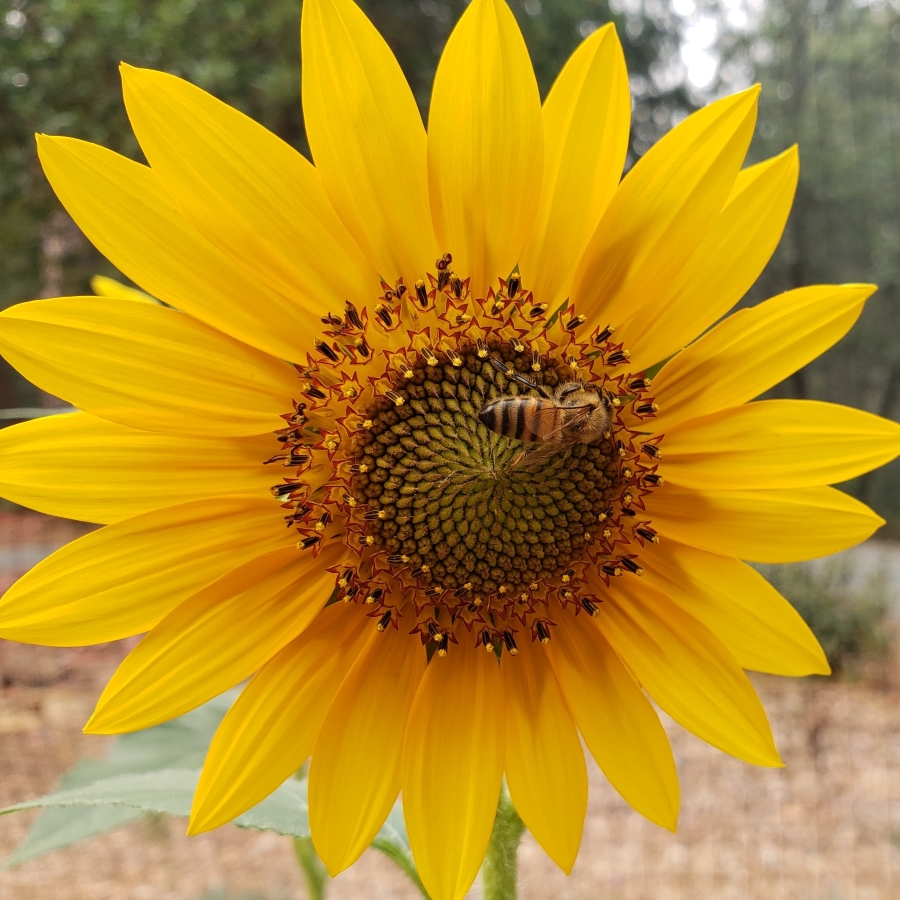
Different types of flowers for different bees
Some bees have short tongues, some have long tongues. The short-tongued bees can only feed from flowers that have easily accessible food. Sunflowers, daisies, and asters are examples of this type. Long-tongued bees can dip into more tubular flowers for their food: plants like penstemon, bee balm, and salvias are good for them.
Try to choose flowers for both short- and long-tongued bees for each bloom time.
Avoid double flowers because it’s difficult or impossible for bees to gain access to the pollen and nectar. Double flowers have ruffled centers with many petals.
How to choose flowering native plants for your garden
It can be daunting to figure out which plants to choose. The Xerces Society is an excellent resource. They’re devoted to invertebrate conservation and their website is full of information. This page gives you access to plant lists for US states, regions, and Canadian provinces. They include plenty of links to other resources to help you find the native plants for your area.
The National Wildlife has a native plant finder resource too.
If you live in California, the perfect native plant finder is Calscape.org. You can type in your exact address or your zip code to get to a list of all the plants native to your exact area. Plus, the nurseries where you can get them from.
You’ll need to know what your sun exposure is for where you want to plant your bee plants. Full sun is at least six hours of direct sun—this is best. Part sun-part shade is four to six hours of sun. Shade is less than four hrs. of sun.
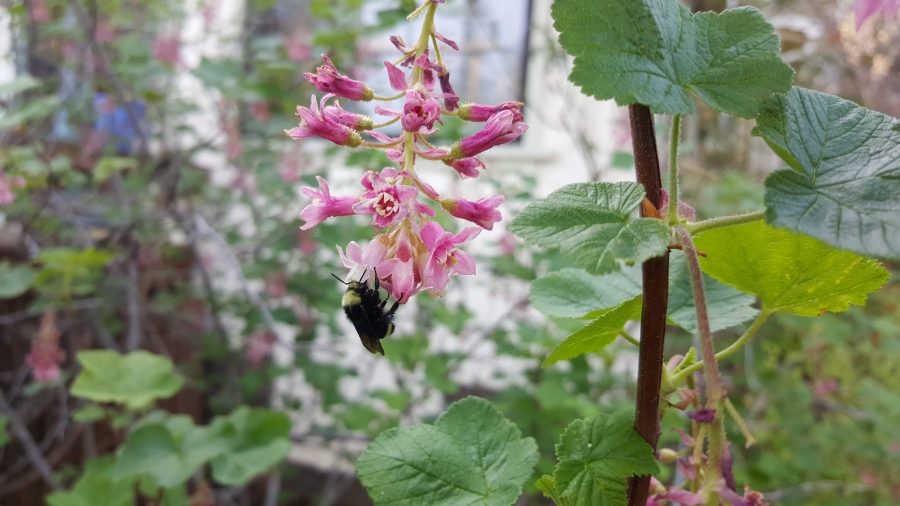
Create a low maintenance, mixed border with native shrubs
A small hedgerow of native shrubs can provide significant bee food and shelter and attract the pollinators. Create a native border native shrubs for your perennials and annuals to offer shelter and habitat for bees and other pollinators as well as food from their flowers.
Select the plants from your native options that will bloom at different times, but especially early spring bloomers. Willows are native to most areas and offer an early source of pollen and nectar for bees. And they host some beautiful butterflies!
Perennial flowers for the bees
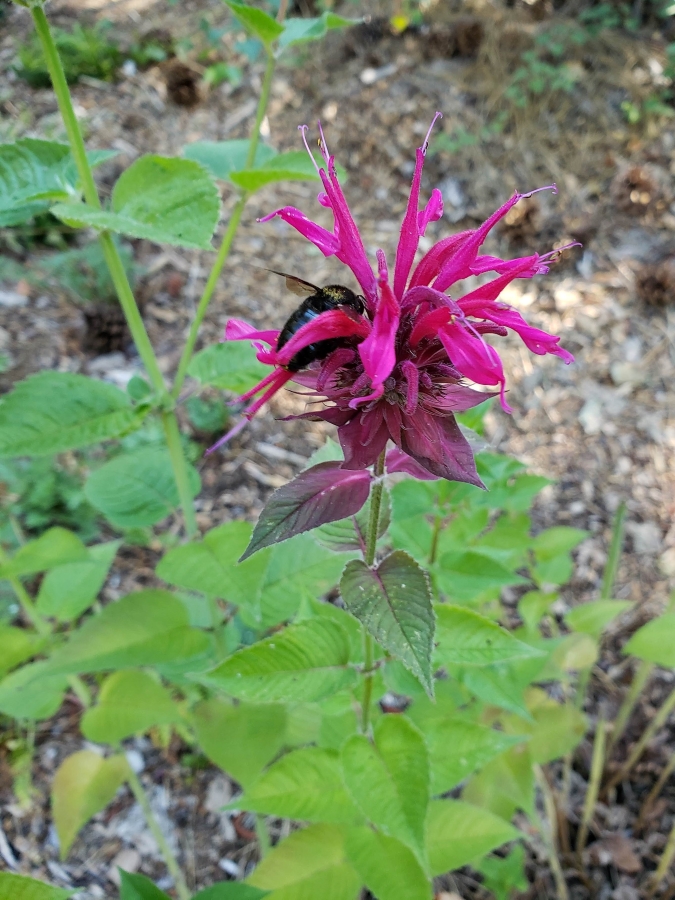
Perennial flowers are fun plants to select and grow. There are so many flowers to choose from, and once planted, they keep coming back and get bigger each year. Start with native flowering perennials and then fill in with non-natives if you like to grow them. Many of these are good cutting flowers!
Depending where you live, plants such as Penstemons, Salvias, violets, Coreopsis, Helenium, Agastache, Monarda (bee balm), and daisies may be included in your native list. There are species of goldenrods that are native to every region in the US, and they are all extremely attractive to pollinators of all sorts and bloom in late summer to fall. (Please—do not confuse goldenrod with ragweed! Goldenrod is the genus Solidago and it does not cause hay fever. Ragweed is the genus Ambrosia and is highly associated with hay fever.)
Other perennials that may be native or non-native to your area that are good for pollinators include echinacea, all the nice varieties of Agastache, feverfew, all Salvias, Campanulas, asters, Gaillardia (blanket flower), Echinops, Eryngium (Sea Holly), lavenders, asters, oreganos-ornamental and culinary varieties, and many other flowers! You can use all of these for cutting flowers, too.
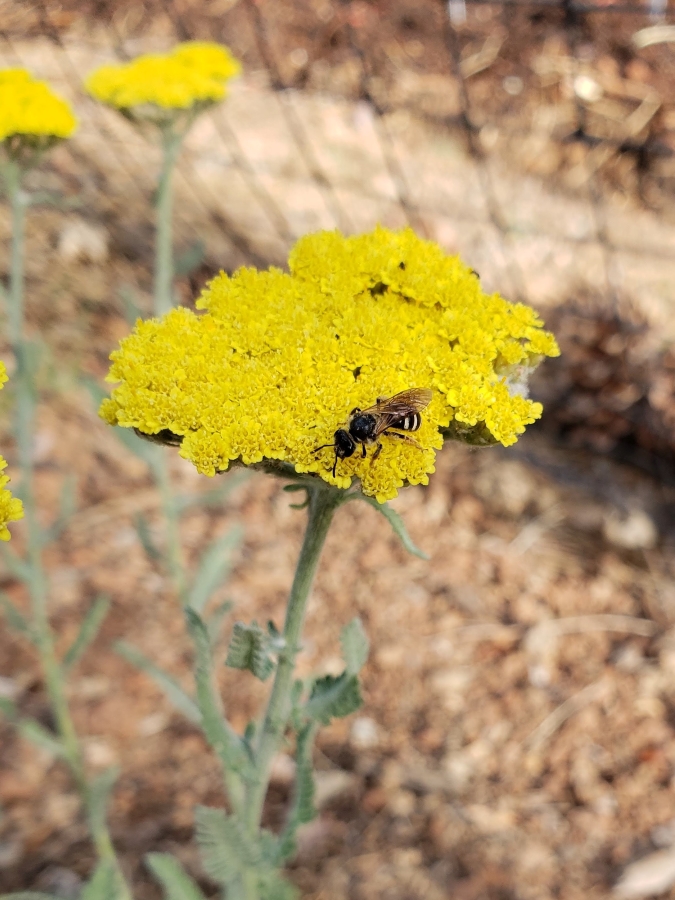
A particularly good one is yarrow. There are two species that are extremely attractive to pollinators: Achillea millefolium and A. filipendulina. The A. millefolium is lower growing and a spreader, invasively so. Its native form is white, but many varieties have been developed that have a huge range of pretty colors and are better behaved in a garden. Achillea filipendulina is an upright grower, non-spreading, with golden flowers (great for cutting and drying).
Annual flowers and wildflowers for the bees
Annual flowers for bees include sunflowers, borage, cosmos, celosias, alyssum, Tithonia, zinnia, and many more.
Include wildflowers! Find the best blend for your area. A good source is American Meadows. See their instructions for how to sow as well. Local nurseries usually carry wildflower seed mixes, too. There are even some blends specifically for pollinators. Try to find a sunny spot for a wildflower garden for the pollinators. Full sun is best, which means at least six hours of direct sun per day.
Herbs, fruits, and vegetables are good too!
Fruit trees, berries, and herbs feed the bees. Vegetables, too. Once you have a good array of native plants, you’ll have attracted plenty of bees to pollinate your food plants. Herbs like oregano, mint, sages, rosemary, thyme all feed bees. Annuals that go to flower, like dill, cilantro, and parsley, feed many of the tiny bees.
So it’s fairly easy to boost our pollinators with flowering plants. You need season-long bloom, enough of each plant, no doubles, and include plenty of natives. The natives will require less water and maintenance than other landscape plants—as a bonus. You can have a gorgeous landscape feature and have a serious impact on helping the pollinators by having a garden with flowers for the bees.
Even if you have a tiny space, containers full of native flowers can help. Every bit helps!

Related Reading:
See my previous article on just how important planting the right flowers is to help the bees and other pollinators: Our Gardens Can Save the Bees—Much More Than You’d Think!
Other articles:
Bumble Bees Are Some of Our Most Important Pollinators
How We Can Help Our Lesser-Known Pollinators
You Can Help the Native Bees-They’re Our Best Pollinators
Don’t Miss This Key Ingredient for a Successful Butterfly Garden
Save Our Birds by Planting the Right Plants and Give the Best Gift to Our Children
